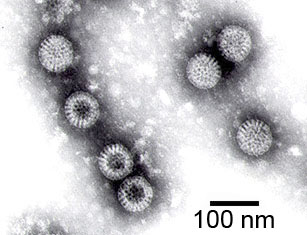|
The Video Clip "Powers of Ten", based on an idea proposed by the Dutch educationalist Kees Boeke, shows in an impressive way the scales of large and small, with us humans somewhere in the middle.
We can see objects easily which are 1000 times bigger or smaller than we are, a mountain or an ant. For larger or smaller scales we need tools, like microscopes or telescopes
|
 Leeuwenhoek's Microscope (~1673) |
 Michelangelo's David (1504) |
 The Hubble telescope (1990) |
The unit of length is the meter, and we use the millimeter = 1 mm = 0.001 meter and the kilometer = 1 km = 1000 meter. For much larger or smaller lengths, counting the zero's becomes boring.
For example, the (average) distance of the Earth from the Sun is about 149600000000 meter. How to make that more readable?
It helps to write numbers in so-called scientific notation, where 1000 = 1.0×103 and 0.001 = 1.0×10-3
The distance Earth-Sun then becomes 1.496×1011 m.
It is common in astronomy to use the distance between Earth and Sun itself as a unit of length, called the Astronomical Unit (AU)
Other distances can then be expressed in terms of this AU.
For still larger distances another unit of length is used, the lightyear (ly), the distance travelled by light (in vacuum) in a year.
So a light year = 365.25 x 24 x 60 x 60 x 299792458 m = 9.46×1015 m
|
 Jupiter |
For example the average distance of Jupiter to the Sun is 7.8×1011m = 5.2 AU
Many people will know the Orion constellation. The reddish star on the right shoulder of the Hunter is Betelgeuse, a red supergiant star. It has a diameter of 5.5 AU and the distance to the Earth is 640 lightyear.
The largest distance, "measured" in the universe until now, is 13.1 billion lightyear!
|
 Orion |
 Pollen |
For the small scales we don't use special units, just the metric system. For example 1 nanometer = 0.000000001 m = 1.0×10-9 m
Both pictures, the pollen and the rotavirus (cause of gastroenteritis), are taken with an electron microscope. The magnification is about 1000 times more for the virus and the maximum that can be achieved
|
 Rotavirus |
Molecules, atoms, elementary particles are too small to be seen in the conventional meaning of the word. The hydrogen atom has a radius of 25 pm, where 1 pm = 1.0×10-12 m
To describe elementary particles, like the proton we need an even smaller unit, the fm = 1.0×10-15 m.
Size looses its meaning here, as we are in the region where particles also behave as waves.
The Large Hadron Collider at CERN will probe even deeper, inside the proton, looking for the evasive Higgs boson, the "God" particle. Hopefully it will also give more information about the beginning of the Universe.
|
 The Large Hadron Collider, the world's most powerful (and expensive) microscope |
|